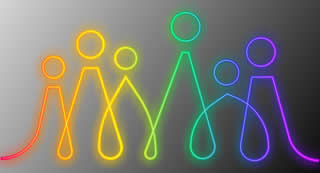 |
|
||
 |
 ...more |
 |
 ...more |
 |
 ...more |
 |
Are There Differences inMen’s and Women’s Brains?
In the February 2023 issue of Science of Mind magazine, authors and researchers Mark Waldman and Andrew Newberg, M.D., examine recent evidence around the question of whether or how men’s and women's brains differ. In a 2021 neuroscientific review of recent studies, the authors find that there are “few reliable sex/ gender differences and a history of unreplicated claims.” Waldman and Newberg write, "There are differences in size, in the ratio between white and grey matter, in memory retrieval and in how the two hemispheres connect and communicate, but do these discoveries translate into any meaningful differences in behavior or in the degrees of happiness and success? Apparently not.” They caution that there are many reasons to be “highly skeptical” of such studies. First, there are obvious gender differences, they say. They add, “The question then is how much difference there actually is, and if those differences translate into different results in the real world.” “Every human brain functions in a unique way, and every human brain has unique structural differences. Every human brain learns in a unique way and constructs values and beliefs that are, again, unique to each individual. But when you do brain scan studies of a hundred people and then generalize the findings, that uniqueness disappears.” Waldman and Newberg conclude: “We all have different ranges of empathy, aggression and intellect, but our brain scan studies, along with hundreds of others, show something remarkable: Spiritual practices — mindfulness, contemplative prayer, etc. — have the ability to make robust changes in the brain that actually enhance our capacities to be kinder, to be more loving, caring and compassionate toward others. “We can, by choice, develop a multi-gendered brain.” |
||||||||||
Embracing Gender-Neutral Language
While the assertion may seem obvious — that language and word usage change over time and in response to ever-evolving cultural norms — the ways those changes appear in writing are complex. Editors grapple with questions of how readers interpret language, of whether it is appropriate to change archaic usages, of how to update language without changing meaning. Where once our sensibility accepted that male pronouns also included females, today we no longer accept that construct. For decades, writers and editors struggled with the best and least disruptive ways to use inclusive language. Remember the 1980s, when he/she and his/her were the accepted norms? Today, we know better and can do better. But larger questions still loom. Consider this recent reporting from The Washington Post: “The Church of England is exploring whether to use gender-neutral language instead of referring to God solely with masculine pronouns, such as 'He’ or ‘Our Father’ — which would be a major change after millennia of prayer and teachings.” In a public statement, the church said, “Christians have recognized since ancient times that God is neither male nor female. Yet the variety of ways of addressing and describing God found in scripture has not always been reflected in our worship.” While the Church of England and likely others grapple with this issue, Science of Mind magazine responded to many years of requests for gender-neutral language in our own texts from Ernest Holmes and others who followed the style of their day and used male pronouns as inclusive of all people. Beginning with the January 2023 issue, editor Holli Sharp brought the magazine in line with today’s thinking about gender inclusivity. “Editing our founders’ language to reflect our more inclusive approach does not change the meaning of what was written,” Sharp says. “In fact, we believe Holmes and others would approve a more inclusive approach, based on their vision of what our philosophy teaches and how our language changes.” |
||||||||||
A Simple Daily Affirmation
By Ernest Holmes I gratefully accept all my heart desires, I clear my mind and |
||||||||||
|
||||||||||
|
||||||||||
| ||||||||||
 |
 ...more |
 |
 ...more |
 |
 ...more |
 |





